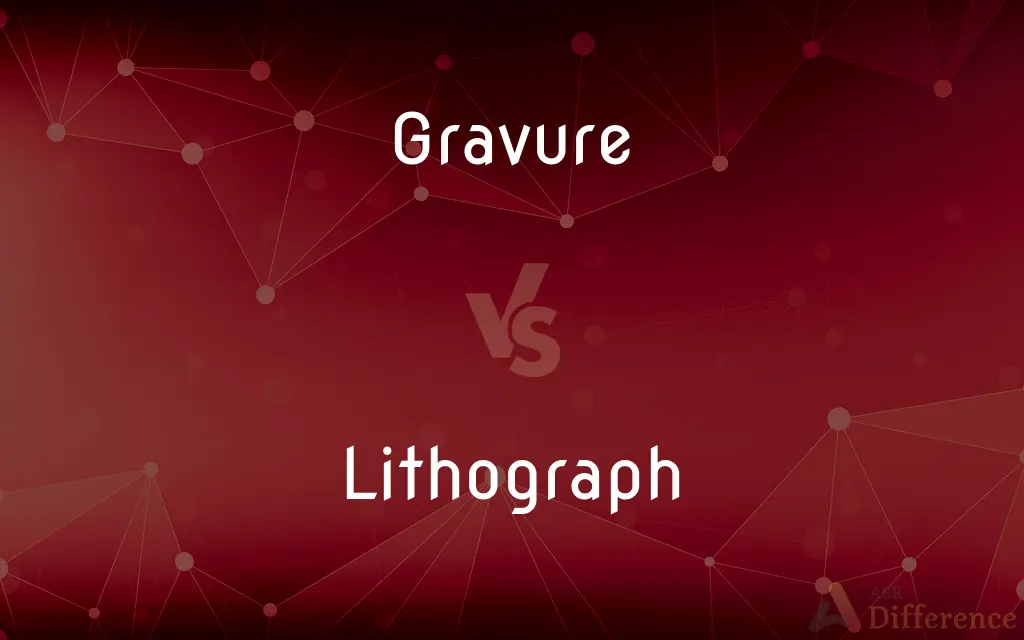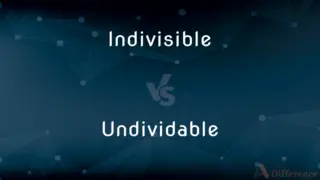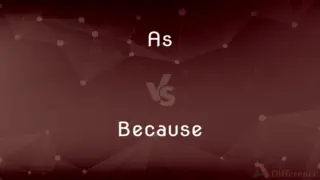Gravure vs. Lithograph — What's the Difference?
By Maham Liaqat & Fiza Rafique — Updated on March 15, 2024
Gravure is a high-quality printing process using engraved plates, ideal for large volumes, while lithography uses flat surfaces with oil and water repulsion.

Difference Between Gravure and Lithograph
Table of Contents
ADVERTISEMENT
Key Differences
Gravure printing involves engraving an image onto a cylinder, which then transfers ink directly onto the paper or another substrate. This process is known for its ability to produce very high-quality images and is commonly used for large runs of magazines, catalogs, packaging, and more. Lithography, on the other hand, is based on the principle that oil and water do not mix. It involves creating an image on a flat surface, treating areas to attract ink or repel water, and then printing from this surface onto paper. It's widely used for art prints, posters, and when a lower volume or high-quality color reproduction is needed.
While gravure is praised for its precision and longevity, making it suitable for high-volume printing projects that require detailed imagery, lithography offers more flexibility in terms of printing materials and is preferred for shorter runs. Gravure cylinders are expensive to produce but are efficient for long runs, whereas lithographic plates are less expensive and easier to create, making them cost-effective for small to medium-sized print jobs.
The choice between gravure and lithography often depends on the specific needs of the printing project. Gravure's depth and quality of print are unmatched, especially for images requiring fine detail and consistency over large volumes. Lithography, while versatile and capable of producing high-quality prints, excels in color control and is better suited for artistic applications or when the print volume is not large enough to justify the initial cost of gravure.
In terms of environmental impact, gravure printing can involve more complex chemical processes and solvents, particularly in the cylinder engraving and ink application stages. Lithography, especially modern water-based processes, can be more environmentally friendly, though it still involves chemicals and materials that require careful management.
Comparison Chart
Printing Process
Engraved cylinder transfers ink to substrate
Flat surface treated to repel or attract ink
ADVERTISEMENT
Ideal Use
High-volume, high-quality image reproduction
Art prints, posters, small to medium runs
Cost
High initial cost, cost-effective in volume
Lower initial cost, suited for smaller runs
Image Quality
Exceptional detail and durability
High quality, versatile in material usage
Environmental Impact
More complex chemicals and solvents
Potentially less impact with water-based inks
Compare with Definitions
Gravure
Gravure printing uses engraved plates for high-volume, detailed printing.
The magazine was printed using gravure to achieve its vibrant images.
Lithograph
Lithography involves printing from a flat surface using oil and water separation.
The artist chose lithography for its subtle color nuances.
Gravure
Ideal for printing on a variety of materials beyond paper.
Gravure is used for high-quality printing on plastic and foil.
Lithograph
Offers excellent color control and detail.
Lithograph printing captures the depth of the original artwork.
Gravure
Gravure cylinders are specifically engraved for each project.
Each gravure project requires a new cylinder, making initial costs high.
Lithograph
Lithographic plates are cheaper and quicker to produce.
Lithography allows for rapid production changes in advertising materials.
Gravure
It's distinguished by its deep ink application and durability.
Gravure printing ensures the packaging's colors last longer.
Lithograph
It's favored for artistic prints due to its quality and versatility.
Limited edition posters are often created using lithograph techniques.
Gravure
Known for its efficiency and consistency in large runs.
Catalogs benefit from gravure printing for their extensive circulation.
Lithograph
Suitable for a wide range of printing surfaces.
Lithograph can be used on paper, canvas, and even wood.
Gravure
Short for photogravure
Lithograph
A print produced by lithography.
Gravure
A method of printing with etched plates or cylinders; intaglio printing.
Lithograph
To produce by lithography.
Gravure
Photogravure.
Lithograph
A printed image produced by lithography.
Gravure
A plate used in the process of gravure.
Lithograph
To create a copy of an image through lithography.
Gravure
A reproduction produced by gravure.
Lithograph
To trace on stone by the process of lithography so as to transfer the design to paper by printing; as, to lithograph a design; to lithograph a painting. See lithography.
Gravure
A type of intaglio printing process, in which an image is engraved onto a rotating copper cylinder.
Lithograph
A print made by lithography.
Gravure
(Japan) A style of Japanese softcore; glamour photography.
Lithograph
A print produced by lithography
Gravure
A printing process that uses an etched or engraved plate; the plate is smeared with ink and wiped clean, then the ink left in the recesses makes the print
Lithograph
Duplicator that prints by lithography; a flat surface (of stone or metal) is treated to absorb or repel ink in the desired pattern
Gravure
A printing plate used in the process of gravure
Lithograph
Make by lithography
Gravure
An intaglio print produced by gravure
Gravure
Intaglio printing
Common Curiosities
Can gravure print on different materials?
Yes, gravure can print on paper, plastic, metal, and more, making it versatile for packaging.
Why choose lithography for art prints?
It offers subtle color nuances and texture representation, ideal for artistic works.
Can gravure achieve high detail?
Yes, gravure is known for its exceptional detail and image depth.
What makes lithography unique?
Its use of oil and water repulsion for detailed, versatile printing on various surfaces.
Is gravure more expensive than lithography?
Initially, yes, due to the cost of engraving cylinders, but it's cost-effective for large runs.
How does lithography handle color?
It provides excellent color control, making it preferred for artworks and posters.
Which process is faster for production?
Lithography is generally faster for setup, making it suitable for shorter runs.
What is gravure printing best used for?
Best for high-volume, high-quality prints like magazines and packaging.
How do setup costs compare between gravure and lithography?
Gravure has higher setup costs due to cylinder engraving, while lithography has lower plate production costs.
Can either process print on textiles?
Lithography can print on canvas, but gravure is typically used for non-textile materials.
What are the environmental considerations for each process?
Gravure involves more solvents and chemicals, whereas lithography can use more eco-friendly water-based inks.
How does the print run size affect the choice between gravure and lithography?
Large runs favor gravure for its cost efficiency, while smaller runs may benefit from lithography's flexibility.
Share Your Discovery

Previous Comparison
Indivisible vs. Undividable
Next Comparison
As vs. BecauseAuthor Spotlight
Written by
Maham LiaqatCo-written by
Fiza RafiqueFiza Rafique is a skilled content writer at AskDifference.com, where she meticulously refines and enhances written pieces. Drawing from her vast editorial expertise, Fiza ensures clarity, accuracy, and precision in every article. Passionate about language, she continually seeks to elevate the quality of content for readers worldwide.















































